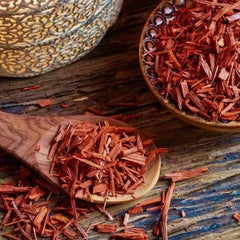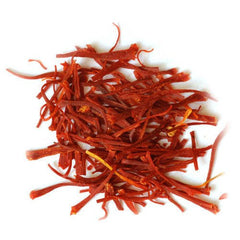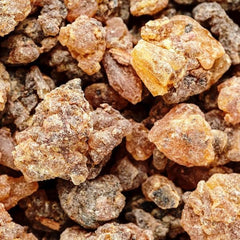What Makes a Perfume Amber?
Click For Affordable Inspired Perfume Alternatives
Perfume is an art form that combines science, creativity, and emotion to craft scents that evoke feelings, memories, and personalities. Among the many fragrance families and notes, one of the most captivating and revered is amber. Known for its warm, rich, and inviting aroma, amber has become a staple in perfumery, often used to add depth and sophistication to a scent. But what exactly makes a perfume amber? Is it a specific ingredient, a blend of notes, or a scent sensation? In this article, we delve into the essence of amber in perfumery, exploring its origins, characteristics, and the key components that define an amber fragrance.
What Makes a Perfume Amber?
Understanding the Concept of Amber in Perfume
Amber in perfumery is not a single ingredient but rather a complex olfactory category associated with warmth, sensuality, and depth. Unlike floral or citrus scents, amber exudes a cozy, resinous quality that often evokes feelings of comfort and luxury. It is considered a "base note," meaning it forms the foundation of many perfumes and lingers on the skin long after application. The term "amber" has its roots in historical and olfactory traditions, where the scent was originally linked to a mysterious, resinous substance. Today, amber is more of a scent profile than an actual material.
The Origins and Evolution of Amber in Perfume
The concept of amber in perfumery dates back centuries, with origins tracing to Middle Eastern and Asian fragrance traditions. Early perfumers discovered that certain resins and balsams created warm and lasting scents, which they associated with the shimmering, golden hue of amber gemstones. Over time, perfumers began to craft "amber" compositions by blending various aromatic ingredients to mimic this warm, resinous quality. Modern perfumery has evolved to include synthetic molecules that replicate or enhance amber notes, allowing for a wide spectrum of interpretations.
The Key Components of Amber in Perfume
While there is no single ingredient that constitutes amber, perfumers typically use a combination of natural and synthetic components to achieve the characteristic amber aroma. These components can be broadly categorized into several key elements:
-
Resins and Balsams: These are natural extracts that provide the rich, warm base. Examples include:
- Myrrh
- Frankincense
- Benzoin
- Myrrh
- Vanilla: A crucial component in creating the sweet, comforting aspect of amber. Vanilla adds a creamy, gourmand quality that enhances the richness of the fragrance.
- Ambergris: A rare and highly valued natural ingredient, ambergris is a secretion from sperm whales that imparts a complex, marine, and slightly animalic scent. In modern perfumery, its scent is often recreated synthetically.
-
Synthetic Molecules: To replicate or amplify amber notes, perfumers use synthetic compounds such as:
- Ambroxan – a popular ambergris substitute with warm, woody nuances
- Cetalox – a clean, amber-like scent
- Amber Notes – proprietary blends designed to evoke the amber aroma
The Olfactory Characteristics of Amber
Amber fragrances are characterized by several distinct olfactory traits that give them their signature warmth and depth:
- Warmth: Amber exudes a cozy, inviting temperature that feels comforting and intimate.
- Sweetness: Often infused with vanilla or other sweet notes, amber has a sensual, gourmand quality.
- Resinous and Balsamic: The presence of resins like frankincense and benzoin adds a sticky, balsamic richness.
- Woody and Earthy: Some amber blends incorporate woody notes, such as sandalwood or cedar, to deepen the scent profile.
- Complexity: Amber is often layered with other notes, creating a multi-dimensional fragrance that evolves over time.
Types of Amber Fragrances
Amber is versatile and can be interpreted in various ways within perfumery. Some common types include:
- Traditional Amber: Rich, resinous, and warm; often associated with oriental fragrances.
- Soft Amber: Lighter, more delicate versions that emphasize sweetness and subtlety.
- Amber Floral: Combining amber notes with floral accords for a balanced, elegant scent.
- Gourmand Amber: Emphasizes edible, sweet qualities with prominent vanilla and caramel hints.
How to Identify an Amber Perfume
When exploring perfumes labeled as "amber," look for the following signs:
- Warm, inviting scent: The fragrance exudes comfort and sensuality.
- Rich base notes: Amber is often found in the base, giving the perfume longevity and depth.
- Presence of vanilla or resins: These ingredients are typical in amber compositions.
- Complex layering: Amber perfumes often reveal multiple facets as they develop on the skin.
The Role of Amber in Perfume Composition
Amber acts as a versatile backbone in many fragrances, bridging floral, citrus, woody, and oriental notes. It enhances the overall warmth and longevity of a perfume, making it suitable for both daytime and evening wear, especially in cooler weather. Its ability to harmonize with various scent families makes amber a favorite among perfumers seeking to create sophisticated, memorable fragrances.
Conclusion: The Timeless Allure of Amber in Perfume
In essence, what makes a perfume amber is a carefully curated blend of natural resins, balsams, vanilla, and synthetic molecules designed to evoke warmth, sensuality, and depth. Amber is more than just a scent; it is an olfactory symbol of luxury and comfort that has stood the test of time. Whether in a classic oriental perfume or a modern gourmand creation, amber continues to captivate fragrance enthusiasts worldwide with its rich, inviting aroma. By understanding the key components and characteristics of amber, perfume lovers can better appreciate its role in creating some of the most beloved and enduring scents in the world of perfumery.
Buy Perfumes - Best Online Retailers
Click For Affordable Inspired Perfume Alternatives
Click For The Best Niche Perfumes & Decants
Pheromone Perfumes - Confidence, Attraction & Appeal - Click For More
Home Fragrances & Candle Warmers - Click To Scent Up Your Spaces Today!



